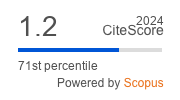Communicative Aspect of Neutrality as a Criterion in the Negotiation Process (Based on Modern English Conflict Discourse)
DOI:
https://doi.org/10.29038/eejpl.2018.5.1.choKeywords:
the principle of neutrality, mediation, tactic of reflexion, tactic of optimal speech counter-reaction, technique of similar questions, technique of neutral questions, technique of neglect.Abstract
The article deals with the ways of defining and explaining the meaning of the notion “neutrality” and the practical ways of its realization in the context of the process of mediation. Psycholinguistics interprets mediative discourse as the deployment of switching from internal code to external verbalization in the processes of producing speech and its interpretation taking into consideration socio-psychological types of linguistic individuals, role settings and recommendations. The conceptual meaning of the word “neutrality” has been succeeded in directing into the communicative plane and the schemes of communicative strategies has been succeeded into the realization of the principle “neutrality” by means of general scientific methods. The principle “neutrality” is the fundamental principle of the process of mediation putting not only into determinant criteria of realisation of the process but as a determinative element of mediator’s status. A number of communicative techniques (technique of neglect, technique of neutral questions, and technique of similar questions) as the principle tools of observance of principle of neutrality have been distinguished and analyzed on the basis of English speaking fiction. Peculiar attention is focused on the motives of tactics introduction (tactic of optimal speech counter-reaction, tactic of reflexion) into the process of mediative dialogue in the form of conversation by means of the parties and individual meeting with each one separately (in a form of caucus). The principle of “neutrality” is a pluralistic one and is examined either a synonymic pair of the term “impartiality” or the term “justice”. These notions are similar in meaning but the tactics of their realization are different within limits of linguistics. Based on the English speaking fiction it has been distinguished not only the communicative mediator’s techniques using of which will serve the observance of principle of “neutrality” but it has been analyzed the tendencies and conditions of their application. Significant aspects within fiction, in particular, are the possibility of transferring the role of mediator to another participant of the dialogue, and during the mediation in general it is possible to say about the combinatorial type of applying techniques.
References
- Astor, H. (2000). Rethinking Neutrality: A Theory to Inform Practice. Australian Dispute Resolution Journal, 11(1), 73-83.
- Astor, H. (2000). Rethinking Neutrality: A Theory to Inform Practice. Australian Dispute Resolution Journal, 11(2), 145-154.
- Astor, H. (2002). Dispute Resolution in Australia. Sydney: LexisNexis Butterworths.
- Boulle, L. (2005). Mediation: Principles, Process, Practice. Chatswood: LexisNexis Butterworths.
- Cobb, S. (1991) Practice and Paradox: Deconstructing Neutrality in Mediation. Law and Social Inquiry, 16(1), 35-62.
- Cohen, O. (1999). The Limits of Mediator’s Neutrality. Mediation Quarterly, 16(4), 341-438.
- Douglas, S. (2008). Neutrality in Mediation: A Study of Mediator Perceptions. Retrieved from https://lr.law.qut.edu.au/article/view/88
- European Code of Conduct for Mediators. Retrieved from: http://www.mediacia.com/documents.htm.
- Field, R. (2000). Neutrality and power: Myths and reality. The ADR Bulletin, 3(1), 16-19.
- Карасик В. И. Языковой круг: личность, концепты, дискурс: монография. [Электронный ресурс]. Волгоград: Перемена, 2002. Режим доступа: https://www.scribd.com/doc/52113602/
- Lederach, J. (1995). Preparing for Peace: Conflict Transformation Across Culture. Syracuse University Press.
- Peterson N. (2007). The Mediation Dictionary. Retrieved from http://www.mediation dictionary.com/pdf/mediationdictionary.pdf
- Романишина І. М. Медіація як ефективний метод вирішення конфліктів у шкільній практиці / І. М. Романишина // Таврійський вісник освіти. 2014. № 3 (47). С. 248-255.
- The European Code of Conduct for Mediators. Retrieved from http://www.mediacia.com/ documents.htm.
References (translated and transliterated)
- Astor, H. (2000). Rethinking Neutrality: A Theory to Inform Practice. Australian Dispute Resolution Journal, 11(1), 73-83.
- Astor, H. (2000). Rethinking Neutrality: A Theory to Inform Practice. Australian Dispute Resolution Journal, 11(2), 145-154.
- Astor, H. (2002). Dispute Resolution in Australia. Sydney: LexisNexis Butterworths.
- Boulle, L. (2005). Mediation: Principles, Process, Practice. Chatswood: LexisNexis Butterworths.
- Cobb, S. (1991) Practice and Paradox: Deconstructing Neutrality in Mediation. Law and Social Inquiry, 16(1), 35-62.
- Cohen, O. (1999). The Limits of Mediator’s Neutrality. Mediation Quarterly, 16(4), 341-438.
- Douglas, S. (2008). Neutrality in Mediation: A Study of Mediator Perceptions. Retrieved from https://lr.law.qut.edu.au/article/view/88
- European Code of Conduct for Mediators. Retrieved from: http://www.mediacia.com/documents.htm.
- Field, R. (2000). Neutrality and Power: Myths and Reality. The ADR Bulletin, 3(1), 16-19.
- Karasik, V. (2002). Yazykovoi Krug: Lichnost, Kontsepty, Diskurs. [Language circle: Personality, Concepts, Discourse]. Retrieved from: https://www.scribd.com/doc/52113602/
- Lederach, J. (1995). Preparing for Peace: Conflict Transformation Across Culture. Syracuse University Press.
- Peterson N. (2007). The Mediation Dictionary. Retrieved from http://www.mediation dictionary.com/pdf/mediationdictionary.pdf
- Romanyshyna, I. (2014). Mediatsiia yak Efectyvnyi Metod Vyrishennia Konfliktiv u Shkilnii Practytsi [Mediation as Effective Method in Conflict Resolution at School Practice]. Tavriiskyi Visnyk Osvity, 3 (47), 248-255.
Sources
- Draper S. (1994). Teas of a Tiger. (Simon Pulse). Retrieved from: http://lgnavigators.weebly.com/uploads/5/8/5/2/58521739/tears_of_a_tiger__hazelwood_hig_-_sharon_m__draper.pdf
- Stockett K. (2009). The Help. (Penguin Group) Retrieved from: https://gelleresol.weebly.com/uploads/3/0/1/6/30164729/the_help_-_kathryn_stockett.pdf











 Creative Commons «Attribution» 4.0
Creative Commons «Attribution» 4.0